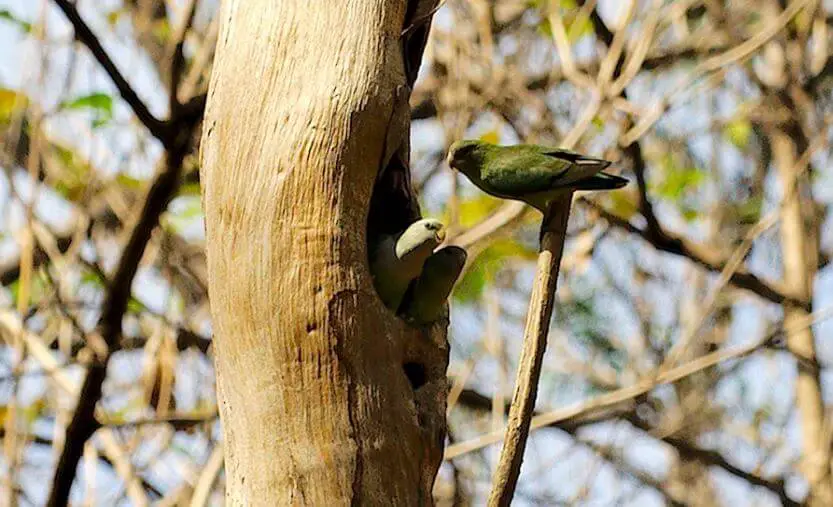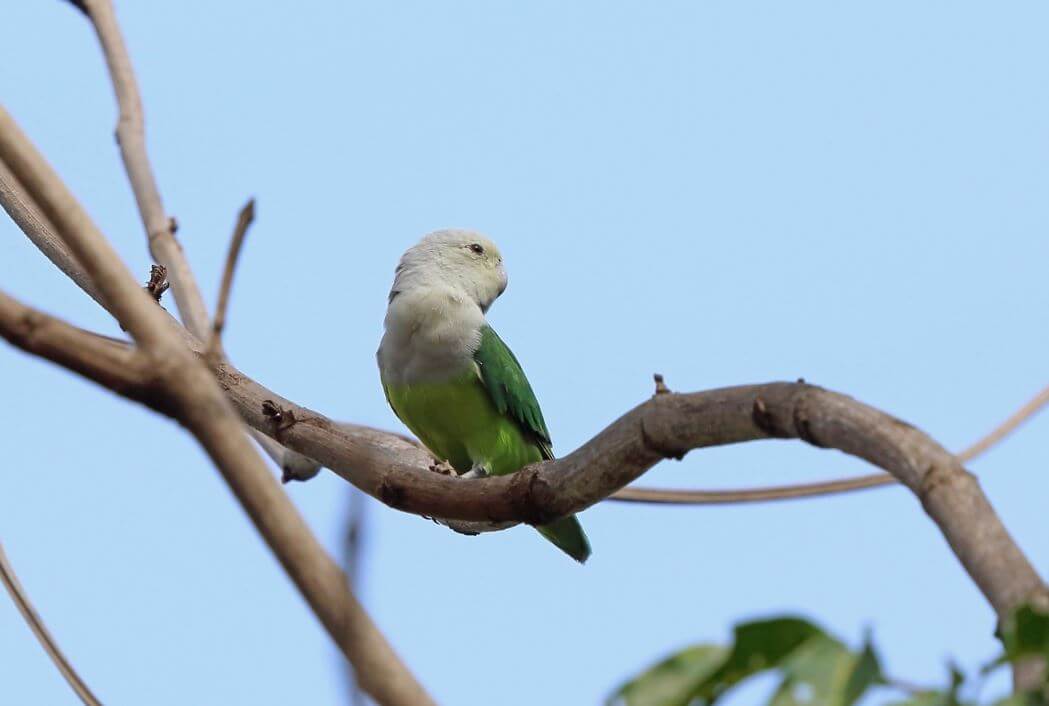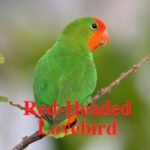
Gray-headed Lovebird 13–15 cm; 25–31·5 g. Male has pale grey from head to upper breast; green upperparts, brighter on rump; yellow-green underparts; black underwing-coverts. Bill whitish-grey, legs grey to bluish-grey, eyes brown.
Gray-headed Lovebird Female more uniform green, with green underwing-coverts, but sometimes has upperparts browner than those of male.
Immature like female but with the yellowish bill with black at base and male has grey hood suffused green. Race ablectanea darker green above, less yellow below, with the grey hood of male darker and bluer.
Editor’s Note: This article requires further editing work to merge existing content into the appropriate Subspecies sections. Please bear with us while this update takes place.
Two subspecies were recognized.
Subspecies
Introduced or believed introduced (presumed canus in most cases) to Comoros, Seychelles, Reunion, Mauritius, Rodrigues, also Zanzibar, and several other African places; persists only in Comoros.
SUBSPECIES
Agapornis canus canus Scientific name definitions
Distribution
Agapornis canus ablectaneus Scientific name definitions
Distribution
Distribution
Editor’s Note: Additional distribution information for this taxon can be found in the ‘Subspecies’ article above. In the future, we will develop a range-wide distribution article.
Habitat
Forest edges and clearings, wooded (e.g. Medemia palm) savanna, scrub and degraded forest, rice fields and other cultivations bordering disturbed woodland and settlements, and less arid parts of semidesert zone; frequently seen on roads. Up to 1500 m, but generally in low-lying areas.

Movement
Sedentary.
Diet and Foraging
Gray-headed Lovebird eating Fruits and grass seeds, mainly the latter including commercially grown elephant grass (Panicum maximum) in Seychelles, are often eaten on the ground; in one case (Comoros) unopened flowering shoots of the grass Stenotaphrum micranthum. Rice is commonly sought, even in villages where set out to dry.
Gathers in flocks of up to 30 individuals, sometimes more, and occasionally associates with Red Fody (Foudia madagascariensis), Sakalava Weaver (Ploceus sakalava), or Madagascar Bibfinch (Lepidopygia nana).
Sounds and Vocal Behavior
Varied whistles and squawks, including a subdued Melopsittacus undulatus-like chatter, especially during courtship display, a metallic “plee plee” and series of high-pitched calls in alarm.
SOURCE: Lovebird Valley
Breeding
Nov–Dec, Mar in Madagascar; Nov–Apr in Comoros. Gray-headed Lovebird Nest in a tree hole, usually dead, which may be subsequently used by Broad-billed Roller (Eurystomus glaucurus), lined with finely chewed pieces of leaf, bark, and grass, which material is brought by the female alone.

Gray-headed Lovebird Eggs (laid at one-day intervals) 3–6, white, mean size 18·2 mm × 15·1 mm; up to eight in captivity, where incubation c. 20–23 days, probably by female alone, commencing with the second egg, hatch asynchronously, fledging period 43 days, with young remaining dependent another c. 2 weeks.

Conservation Status

Not globally threatened. CITES II. Generally widespread and common, more so in coastal areas, but now judged uncommon in E (were formerly common) and rare on the High Plateau.
Listed for 25 protected areas in Madagascar. Can cause damage in rice fields. Local trade is common.
Was perhaps formerly introduced on Zanzibar and Mafia Is, with non-native populations surviving on the Comoros, Seychelles, Rodrigues, and Reunion, and another population on Mauritius is apparently now extinct. Those on Comoros are apparently trapped for trade.
SOURCE: obirds




















